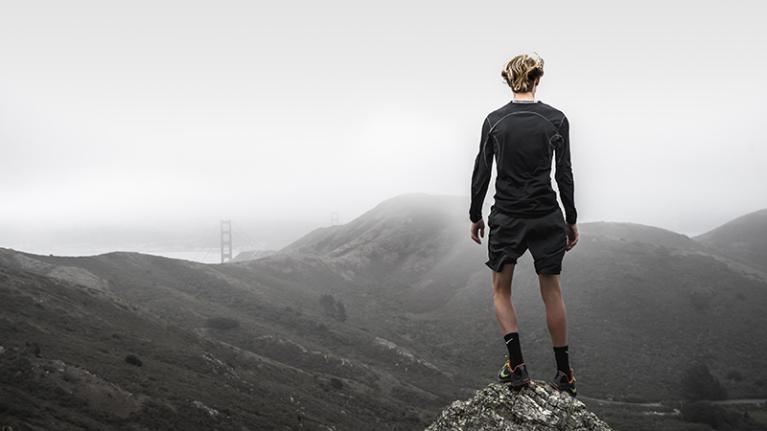Higher training that’s down to earth
It is a sporting truism that to succeed in endurance sport you should train at altitude. So you could head to Colorado, Mont Blanc or the Ethiopian Highlands...
Or Footscray.
VU’s Altitude Hotel is one of only two simulated altitude facilities in Australia: just don’t be expecting room service.

The Altitude Hotel
Situated in the heart of VU’s sport and learning precinct, the Altitude Hotel is a low-oxygen (hypoxic) facility that simulates a high altitude environment by increasing the level of nitrogen in the air.
This causes an increase in haemoglobin in the blood, increasing the efficiency with which blood cells carry oxygen around the body.
By lowering the oxygen level, the hotel’s atmosphere simulates an altitude of around 3500 metres.
With four bedrooms, each with bunk beds, a bathroom, kitchen and a lounge, the hotel can house up to 16 people at a time. However, each room can be set to a different altitude so guests can choose to ‘live’ in Bolivia or Arizona, or whichever altitude best suits their training or competing agenda.
Related
Live high, train low
Altitude training is commonly conducted in one of three ways:
- live high, train high
- live low, train high; or
- live high, train low.
Dr Robert Aughey, senior lecturer in exercise and sport physiology at the University’s Institute for Health & Sport and a senior sports scientist at the Western Bulldogs Football Club, is an authority on altitude training and the physiology of Australian Rules football players.
According to Dr Aughey, a ‘live high, train low’ program enables athletes to reap the benefits of high altitude living while training outside the simulated environment at their usual intensity. Using this technique, athletes live in the hotel for 12 to 14 hours a day for five to 10 days. At the same time they maintain their standard training regime in Melbourne’s low altitude setting of around 40 metres above sea level.
“Altitude training typically leads to performance improvements of one to two per cent. This sounds small, but is quite a big change for an elite athlete,” says Dr Aughey. “With the smallest worthwhile change in athletic performance 0.3 per cent, a change of one to two per cent is really good.”
Research highs
Since VU’s Altitude Hotel opened in 2011, researchers have conducted several major studies with more in the pipeline.
Studies have included research into the benefits of altitude training for team sports and a study into the effects of hypoxia on Chronic Obstructive Pulmonary Disease.
AFL clubs such as VU partners the Western Bulldogs and Port Adelaide use it as part of their pre-season training. Dr Aughey says there is still much to learn about the effects of low and high oxygen environments on the human body.
“Right now it’s just a matter of getting funding to do more research,” he says. “There is certainly no lack of ideas.”
Writer: Jessica Jury